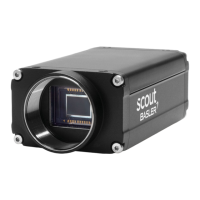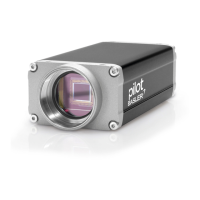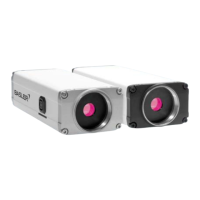Pixel Data Formats AW00089317000
196 Basler ace GigE
9.3 Pixel Data Output Formats:
Some Details for Color Cameras
Bayer Formats
Depending on the camera model, the cameras equipped with a Bayer pattern color filter can output
color images based on the Bayer pixel formats given in Table 23 to Table 26.
When a color camera is set for one of these Bayer pixel formats, it outputs 8 or 12 bits of data per
pixel and the pixel data is not processed or interpolated in any way. For each pixel covered with a
red filter, you get 8 or 12 bits of red data. For each pixel covered with a green filter, you get 8 or 12
bits of green data. And for each pixel covered with a blue filter, you get 8 or 12 bits of blue data.
(This type of pixel data is sometimes referred to as "raw" output.)
For more information about the Bayer filter, see Section 8.1 on page 165.
YUV Formats
Most color cameras with a Bayer filter can output color images based on pixel data in YUV format.
When a color camera is set for this format, each pixel value in the captured image goes through a
conversion process as it exits the sensor and passes through the camera’s electronics. This
process yields Y, U, and V color information for each pixel value.
For more information about the conversion processes, see Section 8 on page 165.
Mono Format
When a color camera is set for the Mono 8 pixel data format, the values for each pixel are first
converted to the YUV color model. The camera then transmits the 8 bit Y value for each pixel to the
host PC. In the YUV color model, the Y component for each pixel represents a brightness value.
This brightness value can be considered as equivalent to the value that would be sent from a pixel
in a monochrome camera. In the color camera, however, the Y component is derived from
brightness values of the pixel and neighboring pixels. So in essence, when a color camera is set for
Mono 8, it outputs an 8 bit monochrome image. (This type of output is sometimes referred to as "Y
Mono 8".)
The values for U and for V normally range from -128 to +127. Because the camera
transfers U values and V values with unsigned integers, 128 is added to each U
value and to each V value before the values are transferred from the camera. This
process allows the values to be transferred on a scale that ranges from 0 to 255.

